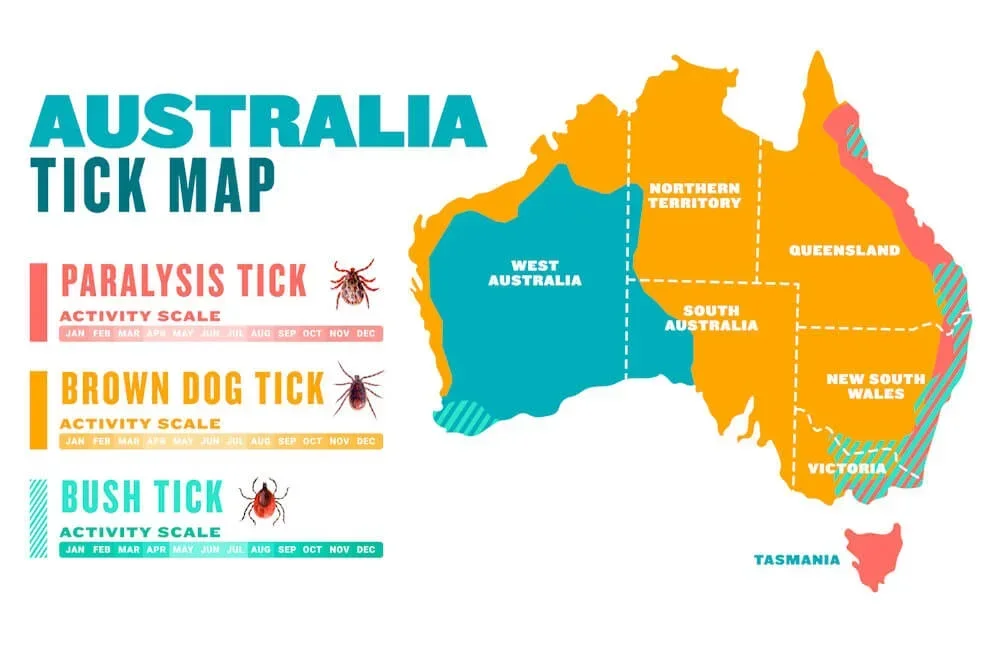Last Updated: 29/03/2025
Best Flea and Tick Treatments for Pets
Find out the best picks from our Vets on the ever growing flea and tick prevention products.
Author: Dr Carla Paszkowski BVSc (Hons)
Reading Time: 28 minutes - medium read
Last Updated: 29/03/2025
Find out the best picks from our Vets on the ever growing flea and tick prevention products.
Author: Dr Carla Paszkowski BVSc (Hons)
Reading Time: 28 minutes - medium read
With the vast array of flea and tick prevention products available on the market, it can be overwhelming for Australian pet owners to determine the most effective and safest option for their furry friends. The truth is, the best choice depends on several factors, including your pet's lifestyle, environment, and specific needs.
We've broken these down into some key questions in our article below so that you can make an informed decision and select the best flea and tick prevention product for your Australian pet. Remember, regular flea and tick prevention is essential for your pet's health and well-being.
Choosing the best flea and tick treatment for your pet involves careful consideration of several factors. Understanding the prevalence of ticks in your region, weighing the pros and cons of topical versus oral treatments, and determining the appropriate treatment frequency are all crucial steps. By considering these aspects and speaking with a veterinarian, you can make an informed decision to ensure your pet remains protected from these troublesome parasites.
Our experts continually monitor the health and wellness space and we update our articles when new information becomes available.
Veterinarian
Dr. Carla graduated from the University of Queensland in 2013 with a Bachelor of Veterinary Science and worked for a number of years in small animal clinics across South East Queensland. While Carla enjoys most facets of clinical veterinary work, she holds a special passion for feline medicine, pocket pets, and nutrition.

There are now flea and tick prevention products to suit a whole range of schedules. While many combination products are required monthly, some brands only need to be given every 2, 3, 4 or 6 months.
For many pet parents, giving a monthly treatment is the way to go. It is easy to remember, and if given in combination with heartworm treatment, it lines up well. A great monthly treatment option is NexGard Spectra for dogs and cats.
However, there are still plenty of people who prefer to give a monthly treatment, as they might find it easier to remember, or perhaps they are already giving monthly heart worm tablets and it lines up well with this. Simparica is a good example of a monthly flea and tick treatment.

Which is best - a flea and tick only product, or a combination product which takes care of worming too? The truth is, it all depends on your personal preference. Many of the different products use similar drugs, so you don't need to worry about a 'combination' product being less effective than a 'flea and tick only' product.
Giving a flea and tick treatment separate to worming can have its benefits - for example, some people might only wish to give flea treatment in the warmer times of the year, but need to continue worming all year round. But for other people, combining everything they need into one treatment is very convenient indeed.
Now, we should just make something clear - not all products that are referred to as 'all-in-one' actually cover for all parasites. The term 'all in one' gets thrown around by manufacturers a lot. Currently the only 'true' all-in-one product available that covers for absolutely every significant Australian parasite is a Nexgard Spectra for cats.
Here are some 'all-in-one' products that come close:
There are plenty of products on the market which cover for fleas, worms, and heart worm, but don't have tick coverage. These products include Advocate, and Revolution.

The easiest way to know which parasite prevention you need is actually quite simple - start by looking at your heartworm regime and then working backwards.
If you do choose to get the yearly heartworm injection, you'll still need to give an intestinal wormer every month. It might then be most convenient to give your flea and tick prevention every month, too, so they line up together. The best flea and tick option for you, therefore, would be the monthly Simparica, Nexgard or Credelio chews. Alternatively, you could give the 3-monthly Bravecto Chews or 6-monthly Bravecto Spot On, and give a monthly wormer such as Drontal.
If you do not choose to get a heart worm injection, you'll need to give heartworm prevention every month. It might then be most convenient to combine your flea and tick prevention with your heartworm and intestinal worming. Therefore, the best preventative for you might be a combination product like Nexgard Spectra, or you can use a separate flea and tick product like Simparica with a wormer that covers for heart worm and intestinal worms such as Interceptor.
There is no heartworm injection for cats, so start by considering the heartworm preventative that you want to start with. You may opt for a monthly 'all-in-one' product such as NexGard Spectra. Alternatively, you may opt for a tablet such as Milbemax monthly to protect against heartworm and intestinal worms, with the addition of a flea and tick preventative such as Bravecto Spot-On every 3 months.
The first thing to consider is which parasites are actually a risk in your area. While fleas are generally considered to be Australia-wide, ticks tend to have geographical hot spots.

Generally, paralysis ticks are mostly found along the East Coast of Australia. However, vet clinics as far west as Melbourne have reported paralysis tick cases in recent years. Only the paralysis tick causes deadly paralysis.
While the Brown Dog Tick and the Cattle Tick do not cause paralysis, they can spread diseases, such as Babesiosis and Ehrlichiosis to dogs, which can be fatal. Generally the risk to cats from Brown Dog Ticks is low.
Bush ticks are generally associated with cattle, but dogs, horses and some marsupials and birds can be affected. They can transmit Babesiosis to dogs, which can cause fatal anaemia.
While maps are helpful, we recommend checking with your local vet clinic as they will know which ticks are a problem in your area. It's also important to know that ticks can travel, such as on pets, clothing and vehicles, so we recommend erring on the side of caution and protecting your pet with a tick preventative.
For cats who spend time outdoors, we recommend tick preventatives such as NexGard Spectra, Bravecto and Bravecto Plus or Revolution Plus.
'Topical' refers to 'spot on' treatments - or anything that is applied externally on your pet.
'Oral' refers to chewables or tablets, which are given internally via your pet's mouth.